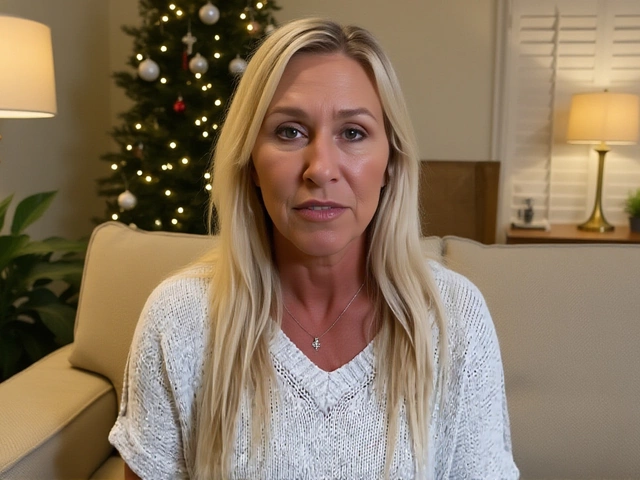When Abby Zwerner walked into her classroom at Richneck Elementary School on January 6, 2023, she had no idea a six-year-old student would pull a loaded handgun from his pocket and fire at her. The bullet shattered her hand, pierced her lung, and changed her life forever. Now, after a three-day trial that gripped Newport News, Virginia, a jury has awarded her $10 million — not for the act itself, but for what happened before it: a failure to listen.
A Warning Ignored
Four teachers told Ebony Parker, then assistant principal at Richneck Elementary, that the boy had a gun. One of them, Amy Kovac, warned her three times. On the third occasion, Parker reportedly said, "His pockets are too small for a gun." That wasn’t just negligence. It was a catastrophic misjudgment rooted in disbelief — the kind that assumes a child that young couldn’t possibly be armed. But he was. And when the shot rang out, Kovac heard it. So did the entire school.
What followed wasn’t chaos. It was silence. Then screams. Then the wail of sirens. Zwerner, 28 at the time, lay bleeding on the floor as paramedics rushed in. The boy, still holding the weapon, didn’t run. He didn’t cry. He just stared. "The look on the student’s face is a large memory that I have," Zwerner testified. "It was like a very blank look but it wasn’t a blank look at all."
The Cost of Survival
Medical experts painted a grim picture in court. Bullet fragments remain lodged in Zwerner’s body — too dangerous to remove. Her right hand, once steady enough to grade papers and comfort frightened students, will never fully regain function. She can’t grip a coffee cup the way she used to. She can’t hold her newborn nephew without pain. And then came the most devastating revelation: her life expectancy, once projected to be into her late 70s, is now 53.
Her mother testified through tears about the woman she used to know — the one who hosted family barbecues, danced at weddings, called her siblings every Sunday. Now, Zwerner avoids crowds. She flinches at sudden noises. She doesn’t talk about the shooting. Not even to her sister. "She’s still here," her sister said, "but she’s not the same person."
Why $10 Million — Not $40
Zwerner’s legal team, led by attorney Joseph Toscano of Kline & Specter, asked for $40 million. They argued for punitive damages, citing systemic failures in the Newport News Public Schools district. But the jury awarded only compensatory damages — for pain, lost earnings, medical costs, and the stolen future. The decision wasn’t about punishment. It was about acknowledgment.
The judge, in dismissing the jury, said: "It is an important service to all of us." And he was right. This wasn’t just about one teacher. It was about whether adults in positions of authority will take children’s safety seriously — even when the threat comes from someone who shouldn’t be able to hold a gun, let alone fire one.
A National Wake-Up Call
This case didn’t happen in a vacuum. In 2022, there were 302 school shootings in the U.S. — the highest number ever recorded. In 2023, the year Zwerner was shot, at least 12 incidents involved children under 10 with access to firearms. Most were accidental. This one wasn’t. It was preventable.
Virginia law requires schools to report threats, but doesn’t mandate how those threats are investigated. Richneck Elementary had no protocol for handling reports of weapons on campus. No metal detectors. No threat assessment team. No training for staff on how to respond to a child with a firearm. And yet, four teachers felt compelled to speak up. They did their part. The system failed them.
What Comes Next?
The Newport News Public Schools district has not yet commented on the verdict. But legal analysts say an appeal is likely — possibly from Parker individually, or from the school board. Either way, this case will set a precedent. If school administrators can be held personally liable for ignoring credible threats, it will force a reckoning across the country.
Already, state legislators in Virginia are drafting bills that would require threat assessment teams in every public school. Some are pushing for mandatory training on child firearm access. Others want background checks for students who bring weapons — yes, even if they’re six years old. The idea sounds extreme. But after this verdict, what’s extreme is doing nothing.
The Human Cost Behind the Numbers
Abby Zwerner’s story isn’t about money. It’s about the quiet unraveling of a life. The nights she can’t sleep. The way she avoids mirrors because she can’t stand to look at the scar on her hand. The fact that she’ll never teach again — not because she doesn’t love it, but because the fear is too deep.
She didn’t ask to be a symbol. But now she is. And if her case changes how one school responds to a warning, how one administrator listens before it’s too late — then maybe her pain won’t be in vain.
Frequently Asked Questions
Why wasn’t the 6-year-old student charged with a crime?
Under Virginia law, children under 10 cannot be prosecuted for criminal acts due to the legal doctrine of doli incapax — the presumption that young children lack the capacity to form criminal intent. While the boy’s actions were deadly, the legal system treats him as a victim of circumstance — likely raised in a home with unsecured firearms — rather than a criminal. The focus of the lawsuit shifted to adult accountability: who knew, and why didn’t they act?
How common are incidents like this in U.S. schools?
Since 2018, there have been over 40 documented cases of children under 10 bringing firearms to school and discharging them. In nearly half of those cases, adults had been warned beforehand. A 2024 study by the Johns Hopkins Center for Gun Violence Solutions found that 72% of school districts have no formal protocol for handling reports of weapons carried by young children. This case is a tragic outlier — but not an anomaly.
What does the $10 million award actually cover?
The $10 million is strictly compensatory: $3.2 million for future medical care, $2.1 million for lost wages and career potential, $2.5 million for permanent disability to her hand, and $2.2 million for emotional trauma and reduced life expectancy. No punitive damages were awarded, meaning the jury didn’t intend to punish the school district — only to acknowledge the irreversible harm done to Zwerner.
Could this lead to changes in school safety policies?
Yes. Within 72 hours of the verdict, the Virginia House Education Committee announced it would fast-track a bill requiring all public schools to establish threat assessment teams and mandatory staff training on recognizing child firearm access. Similar legislation is being considered in at least five other states. This case has shifted the conversation from "How do we stop shooters?" to "How do we stop the adults who ignore the warning signs?"
Why did it take over two years for the trial to happen?
The delay was due to procedural complexities: the school district requested multiple extensions to review internal communications, and the defense challenged the admissibility of testimony from teachers who reported the gun. Additionally, the pandemic had disrupted court scheduling, and the case required expert medical and psychological evaluations that took months to complete. The trial finally began on November 4, 2025, after more than 28 months of legal preparation.
What role did media coverage play in the outcome?
Live coverage by 13News Now and national outlets like Scripps News kept public pressure on the legal process, but the jury was sequestered and instructed not to consume media. Still, the widespread attention likely influenced the school district’s decision to settle pre-trial negotiations — and may have encouraged other victims of institutional neglect to come forward. The trial became a mirror for the nation’s unresolved crisis of school safety.




